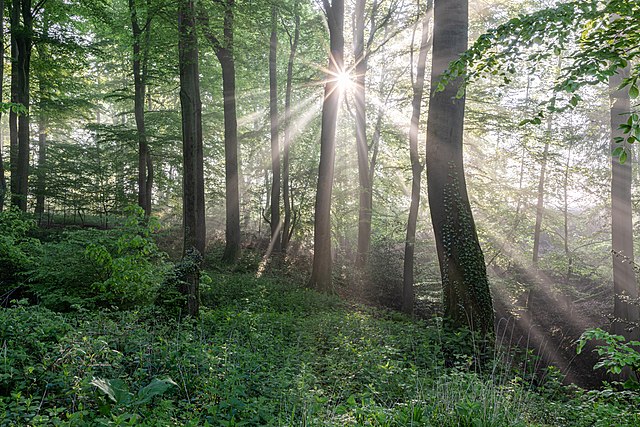
By Jessica Corbett
Just ahead of World Environment Day and amid demands from scientists and grassroots organizers for global systemic changes, a pair of United Nations agencies on Thursday launched the U.N. Decade on Ecosystem Restoration with a report that serves as a call to action for everyone to join the #GenerationRestoration movement.
“Restoration is essential for keeping global temperature rise below 2°C, ensuring food security for a growing population, and slowing the rate of species extinctions.”
—U.N. report
The new U.N. Environment Program (UNEP) and Food and Agriculture Organization (FAO) report highlights that humans are using 1.6 times the resources that the planet can sustainably provide and since the 1990s, 420 million hectares or over a billion acres of forest have been lost.
Such statistics underscore the need for countries to deliver on existing pledges to restore at least one billion degraded hectares of land—roughly 2.47 billion acres or an area about the size of China—as well as make similar commitments for the world’s oceans.
“We speak of two-thirds of ocean ecosystems being damaged, degraded, and modified, and if you consider that the planet is 70% ocean, that is an enormous amount, including plastic pollution which is so ubiquitous that it is very hard to avoid plastic—even in fish that we catch and eat,” said Tim Christophersen, head of UNEP’s Nature for Climate Branch, Ecosystems Division, according to U.N. News.
In the report’s foreword, UNEP Executive Director Inger Andersen and FAO Director-General Qu Dongyu write that “the 2021–2030 timeline underlines the urgency of the task. Without a powerful 10-year drive for restoration, we can neither achieve the climate targets of the Paris agreement, nor the Sustainable Development Goals.”
Andersen and Qu point out that “degradation is already affecting the well-being of an estimated 3.2 billion people—that is 40% of the world’s population. Every single year we lose ecosystem services worth more than 10% of our global economic output.”
“This report presents the case for why we all must throw our weight behind a global restoration effort,” they continue. “Drawing on the latest scientific evidence, it explains the crucial role played by ecosystems from forests and farmland to rivers and oceans, and charts the losses that result from our poor stewardship of the planet.”
Entitled Becoming #GenerationRestoration: Ecosystem Restoration for People, Nature, and Climate (pdf), the report says that “restoration is essential for keeping global temperature rise below 2°C, ensuring food security for a growing population, and slowing the rate of species extinctions. Humanity is not outside of nature; it is part of it. We need to recreate a balanced relationship with the ecosystems that sustain us.”
The agencies detail what is happening in various ecosystems, from farmlands and forests to grasslands, mountains, peatlands, savannahs, urban areas, and bodies of water. They also outline why restoration is necessary for the economy, food security, clean water, human health and well-being, the climate emergency, peace, and biodiversity.
“Unfortunately, we are still going in the wrong direction,” the report warns. “People living in poverty, women, Indigenous peoples, and other marginalized groups bear the brunt of this damage, and the Covid-19 pandemic has only worsened existing inequalities.”
UNEP and FAO also emphasize that restoration must happen on a massive scale to achieve the international community’s sustainable development agenda, that successful efforts will require “deep changes” but deliver multiple benefits, and that “everyone has a role to play,” from governments and donors to youth organizers.
Ecosystem restoration, the report says, “is one of the most important ways of delivering nature-based solutions for societal challenges.” Some of the changes it requires include natural capital accounting, eliminating subsidies that incentivize further degradation and fuel the climate emergency, reducing food waste, using agricultural land more efficiently, promoting plant-based diets, and incorporating the importance of healthy ecosystems into educational systems.
The U.N. agencies estimate that restoring lands in line with the one billion hectare commitment will require an investment of at least $200 billion per year by 2030—and while that may seem steep, the report notes that every $1 invested in restoration creates up to 30 times that amount in economic benefits.
“Restoration needs to be seen as an infrastructure investment in a country’s well-being. We need imagination,” UNEP’s Christophersen told The Guardian. “For many people, I think restoring a billion hectares is a bit abstract. We have decades of experience of how this could work but never on the scale we’re talking about. We have space program[s] and nuclear weapons—it is possible.”
The report comes as 126 Nobel laureates shared a statement titled “Our Planet, Our Future: An Urgent Call for Action” with leaders of Group of Seven countries and the U.N. secretary-general ahead of a G-7 summit, and a day after La Via Campesina, an international movement of peasants and others, published an “Anti-Imperialist Manifesto in Defense of the Environment.” Members of that movement are among those planning global actions for Saturday, which is World Environment Day.
Jess joined Common Dreams as a staff writer in 2017, after working for publications in New York City and Chicago, including Rolling Stone, The Nation, In These Times, VICE, and Fusion. She earned a degree in journalism and international studies from Ithaca College, where she developed her passion for exploring the intersection of politics, public health, and environmental policy through journalism. Jessica is a dedicated yogi who loves long books, live music, and adventures abroad.
Editor’s note: this article originally appeared on Common Dreams
Image credit: Dietmar Rabich / Wikimedia Commons / “Dülmen, Rorup, NSG Roruper Holz — 2021 — 8187-91” / CC BY-SA 4.0



Leave a Reply